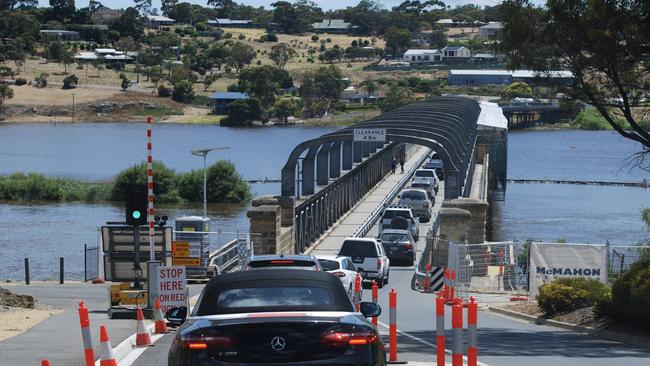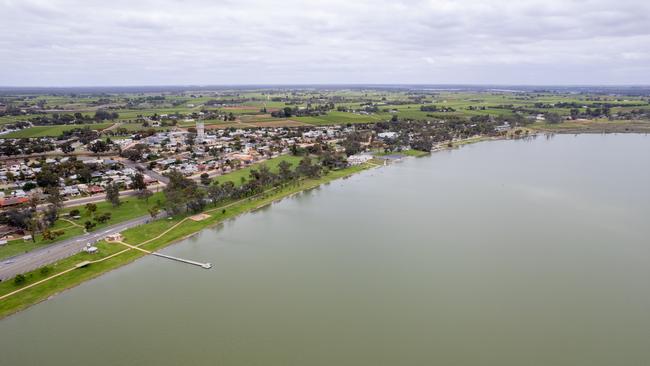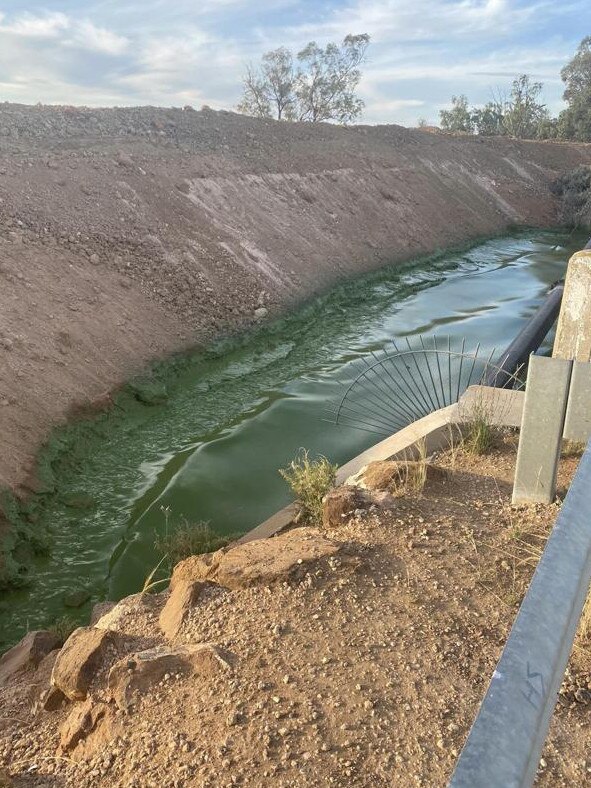Murray flooding ‘hits its peak’, waters set to recede SA authorities reveal
The worst of the flooding in SA is now over with the River Murray hitting its peak – though the state is “not out of the woods yet”, authorities say.
SA News
Don't miss out on the headlines from SA News. Followed categories will be added to My News.
Flood peaks along the River Murray have now hit every town in South Australia that will be impacted by rising waters, authorities say.
Wellington, at the junction of the River Murray and Lake Alexandrina, was the last town to be hit by peak flows on Wednesday.
On Thursday, Emergency Minister Joe Szakacs said SA “was not out of the woods yet” but the worst of the flooding was now over.
“The levees created along the river to protect towns and properties have done their job … but they are still engaged,” Mr Szakacs said.
Authorities warn that wind, tides and wave action may still cause inundation in low-lying areas around the Lower Lakes as the peak moves through.
The flow across the border on Thursday morning was 135GL, but Mr Szakacs said water recession would not necessarily be linear across communities.
“Whilst we see a decline in flow rates … there may not be the same linear observation of the reduction of water heights in some communities,” Mr Szakacs said.
A speed limit of 60km/h is in place for the Princes Highway between Tailem Bend and Meningie, which remains at risk of closure due to rising tides.

As of Monday, the SES had identified 68 catastrophic levee defects, 168 major defects, 57 moderate defects and 84 minor defects along the Murray.
SES chief officer Chris Beattie said Lake Alexandrina was tracking at 1.16 metres AHD – above forecast – with some inundation around low-lying areas, particularly Milang.
More than 3500 homes have been disconnected from power so far, with Milang shack owners in the process of being reconnected.
River flows are expected to drop to 60GL/day by the end of January, which includes inflows from the Darling River.
Mr Beattie said the additional 12GL/day flows from the Darling would not cause any rise in river levels, but would likely slow water recession.
The SES chief said river communities had likely seen the end of power disconnections, unless there are further levee failures.
An imposed four-knot limit for powered vessels within 250m of any levee, dwelling or building will now apply to all areas downstream from Wellington Ferry and Lake Bonney.
However, the first lifting of restrictions since the flood event began has been announced – with powered vessels now allowed within 250m of the downstream side of Paringa Bridge.
The prohibition remains in place upstream of the bridge.
Meanwhile, fishing of Goolwa cockles, also known as pipis, has been banned from the mouth of the River Murray at Goolwa to Middleton Point after E. coli was detected in the molluscs.
PIRSA acting executive director Benn Gramola said testing had detected E. coli in levels above what is considered safe for human consumption and the ban would remain in place until further notice.
Lake Bonney algae warning
People are now allowed to swim and dive between the Barmera Jetty and Lake Bonney Yacht Club after daily blue green algae tests from SA Health read below the recreational water guidelines.
“Daily testing of blue green algae levels is being carried out and these results are being published on the SA Health website, allowing people to determine where and when to swim.
“People are advised to check for updates regularly, since the situation is variable and subject to change.”
SA Health is still urging people to not swim or dive in the water if there is a visible blue-green water discolouration.
It comes as SA Health banned swimming and diving after water samples taken on Saturday revealed that harmful blue algae had returned in parts of Lake Bonney.The algae triggered a warnings against swimming and diving in the area between the jetty and yacht club. But other parts of the lake remain safe for all water activities.

SA Health Principal Water Quality Adviser Dr David Cunliffe said direct contact with the affected water could cause local irritations while swallowing the water could lead to illness.
“All water samples taken on Saturday, January 7 showed the water was safe for water activities, however blue green algae levels have now significantly increased at the Barmera foreshore despite mitigation efforts, which include the use of aerators and pumps,” he said.
“Anyone who has been swimming at Lake Bonney should closely monitor for symptoms – especially in children and pets. These symptoms can include nausea, diarrhoea, vomiting and abdominal cramps.
“About one in 10 people may also develop a rash or skin irritation, which usually goes away after washing the affected area.
“If you have been in the water at Lake Bonney and you start feeling unwell, seek help. Consult with your GP and say you may have been exposed to blue green algae.

“Pets are particularly vulnerable and should be kept out of the water. Algae may also stick to their fur, giving them a higher exposure.”
Mr Cunliffe said any fish caught in the lake should be throughly cleaned and gutted before being eaten.
It comes as SA Health issued a warning urging people to avoid Lake Bonney on December 31 after locals raised the alarm on social media when the water began to discolour and smell in December 2022.
The state government introduced a plan to ease restrictions on the River Murray in stages, saying it will fast-track a safe return to recreation activities.




